#T. Bernhard
Explore tagged Tumblr posts
Text

De quatre mille ans
nous revenions chez nous,
dans nos yeux séchait
le vin des lagunes,
nous voyions les bateaux échouer
dans la lumière rouille du soir,
pourtant derrière les bateaux les enfants
ne nous voyaient pas.
/ Thomas Bernhard
17 notes
·
View notes
Text

#gwen stefani#stevie nicks#bjork#sandra bernhard#natalie cole#trish yearwood#joni mitchell#90s#at&t#at&t presents#stormy weather
5 notes
·
View notes
Text
Cuddling (fluff)
Requested?: No
Oneshot: Tim and Bernard cuddling. (That's it, that's the oneshot.)
I didnt plan to post today but here we go
Tim Drake loved a lot of things. A lot of them were Robin or crime fighting related but his boyfriend Bernard was one of the things that Tim Drake himself loved the most.
After a long patrol, Red Robin put down his gear with a long sigh. The patrol was not necessarily bad it was just very long and Tim was drained, ready to fall into bed and sleep for 12 hours straight. Batman already sat back in front of the Batcomputer, the rest of the family was out on patrol or upstairs in the manor.
"Master Tim." Tim turned around, Alfred approached him with a small smile. "Mr. Dowd came to visit you earlier, he is staying in your room. I thought i would let you know so you don't get a heart attack."
Tim's eyes widened and a smile crept up on his face. He texted Bernard earlier but he didn't know he would come over. Alfred smiled and nodded his head before he walked off. Tim stood there for a few more seconds smiling before he took a very swift shower. After all, his boyfriend would probably not want to share a bed with him when he was all sweaty and dirty from patrol.
After that, dressed in a tshirt and sweatpants, Tim silently made his way through the hallways over to his room. It looked like the light was out so he slowly opened the door to not wake his boyfriend, in case he was sleeping.
Tim quietly entered and closed the door behind himself. The room was dark except for the moon light shining through the gap between the curtains. He could spot a body under his blankets that slowly moved up and down breathing, blond hair sticking out from under the blanket.
Tim tiptoed over to the bed and slowly crawled over the matress and under the blanket. Bernard sighed softly as the matress moved under him. Tim layed down behind him and wrapped his arms around the other boys waist which made the smaller boy press his body against him a little.
"You are finally here." Bernard mumbled sleepy while he turned around and pressed his nose into Tim's shoulder. Tim smiled as the smaller boy wrapped his arms around him too. "Yeah, i kinda got baited with the idea of cuddling my boyfriend." Tim chuckled softly while he put his head on Bernard's head.
"You seemed to feel down earlier so i thought i'd come over and cheer you up." Bernard leaned up and peppered Tim's neck with kisses. Tim giggled and blinked away some tears. "Ahh, how do i deserve you?" He grumbled while he kissed Bernard's head. The other boy leaned up and nudged his nose against Tim's chin, demanding a kiss. Tim chuckled and leaned down to fulfill his wishes.
Bernard's lips where soft against his and he happily sighed into the kiss. They exchanged some sweet, innocent kissed and leaned their foreheads against eachother to enjoy the other's presence. "You totally deserve me." Bernard whispered. "But don't think about it now, i came to cuddle you happy, not to make you cry." Tim rolled over and pressed his face into the pillow embarassed.
"So... do you want me to spoon you or do you want to lay down on top of me?" Bernard asked with a sunny smile. Tim pressed his face into the pillow deeper. "On top of you please." He grumbled into the soft fabric sheepishly. Tim felt his boyfriend move around a little and after that hold up one side of the blanket. He moved over little by little like a cautious animal until he pressed himself up and climbed half over Bernhard. He settled down on his chest with his arms around his back and their legs tangled together.
Bernhard slipped his hands under Tim's t-shirt and gently carassed his lower back. Tim purred a little and nuzzled his nose into his neck. "I like that, keep going." He mumbled into Bernhards neck who chuckled in response. He continued to gently massage his boyfriends skin and Tim basically went limb on top of him.
The tender affection slowly lulled Tim to sleep, there was no denying that this was his happy place. "Sleep tight, Tim." Bernard whisper into his hair. Tim lazily lifted his head up and leaned over to gently kiss his boyfriend. "Mhh, i love you." He whisper lightly slurrend from the sleepiness. Bernard smiled at him and returned a short but sweet kiss.
"I love you too." Bernard whispered back. Tim made a determined nod of acknowledgement and Bernard laughed softly at the sleepy state that Tim slipped into. "Can you spoon me now?" Tim asked. Bernard nodded and Tim rolled over to the side with his back facing the other boy.
Bernard scooted closed and wrapped his arms tightly around Tim's waist. He pulled the blanket over them and made sure Tim was tucked in nicely and wouldn't get cold. "Thank you." Tim mumbled while he nuzzled into the body behind him and took Bernard's hand to kiss it. "I got you. Good night, baby." The blonde boy whispered into Tim's neck smiling.
Tim smiled and kissed Bernhard's hand again before he tucked it under his arm and finally dozed off in the arms of his love.
#batfam#tim drake#red robin#bernard dowd#tim drake x bernard dowd#lovers#love#cuddling & snuggling#fluff#my writing#wrote this during statistics class#timbern
47 notes
·
View notes
Video
youtube
Gwen Stefani - Almost Blue
ALBUM: Stormy Weather ..... LABEL: AT&T Presents ..... Year: 1998 From the AT&T special release CD (and one of the best things I ever got in the mail!). This concert, April 16, 1998, was held for the benefit of the Walden Woods Project and the Thoreau Institute. It was produced by Don Henley and recorded live at the Wiltern Theater in Los Angeles. It featured a dazzling array of top contemporary female vocalists singing pop & jazz standards from the 30's - 50's and is some of the best music you will experience. The Fabulous Ladies: Joni Mitchell, Sheryl Crow, Trisha Yearwood, Paula Cole, Sandra Bernhard, Natalie Cole, Shawn Colvin, Bjork, Stevie Nicks and Gwen Stefani. Musical Director: Larry Klein Arranger/Conductor: Vince Mendoza Featured Musicians: Chuck Berghofer - Bass, Jim Cox - Piano, Peter Erskine - Drums, Gary Foster - Alto Sax, Mark Isham - Trumpet, Plas Johnson - Tenor Sax and the rest of the 66 piece El Nino Orchestra.
17 notes
·
View notes
Text
The Sounds of Taiwanese
I'm back to posting about Taiwanese after... we don't have to say how long haha. In this post I'm going to break down the vowels and consonants of Taiwanese! We'll save the tones for later because I think they deserve a post of their own. Transcriptions in this post are in the Tâi-lô romanization system.
Taiwanese Initial Consonants

The four main places of articulation used in Taiwanese are bilabial, alveolar, velar, and glottal. These correspond to the places of articulation used for the English/Mandarin pinyin letters p, t, k, and h.
The nasal consonants in Taiwanese are similar to their English/Mandarin counterparts, except that ng can appear at the beginning of syllables, as in the word 扭 ngiú "to twist". To practice this sound, say a word like "singing", then take off the si-.
Taiwanese distinguishes three types of stop and affricate consonants: voiced unaspirated, voiceless unaspirated, and voiceless aspirated. The latter two are about the same as b and p in Mandarin, which lacks fully voiced consonants. Most English speakers (to my knowledge) don't produce fully voiced stop consonants either, so this distinction can take some practice and listening.
Taiwanese aspirates are alveolar in most contexts, meaning they are pronounced like the ts in a word like "cats", but alveolo-palatal when they come before the vowel -i, meaning they are closer to a Mandarin q/j/x or English ch sound.
Taiwanese l can vary between an l sound and a tapped r, like the r in Spanish or Japanese.
Taiwanese Vowels

Taiwanese's six vowel system is actually pretty straightforward compared to Mandarin's. i, e, a, and u are pronounced similarly to Spanish (as opposed to English, in which we like to make our vowels into diphthongs). oo is like a Spanish o, produced with the mouth slightly more open.
o is pronounced like a Spanish o in Northern Taiwan and a schwa (the vowel in English "but") in Southern Taiwan.
Taiwanese has a diphthongs (combinations of two vowels) and triphthongs (combinations of three vowels). They are: ai, au, ia, iau, io, iu, ua, uai, ue, and ui.
Taiwanese also has syllabic nasals! The consonants m and ng can appear as the final of a syllable without a vowel, as in the words 毋 m̄ "not" and 遠 hn̄g "far".
Taiwanese also also has nasalized vowels, as in French "non". Most vowels and diphthongs can be nasalized, but not all. In Tâi-lô, a nasalized vowel is represented with two n's, as in ann or iunn.
Taiwanese Final Consonants

Taiwanese syllables can not only end in -n and -ng, like in Mandarin, but also -m.
Taiwanese syllables can also end in stop consonants! These consonants are generally not released. This is similar to the how final consonants of the English words "stop", "cat", and "back" are commonly pronounced.
The glottal stop doesn't so much have a sound of its own, but it makes the preceding vowel sound short and cut off. The sound in the middle of the English word "uh-oh" is a glottal stop.
Final Notes
There are rules governing the ways that these initials, vowels, and final consonants can be combined, but I don't think memorizing them is that useful to a beginning learner.
I've provided IPA and the best explanations I could come up with, but if you want to learn to pronounce Taiwanese the best thing to do is listen! Most resources come with audio, as does the dictionary https://sutian.moe.edu.tw/.
The sources I used for this post include Taiwanese Grammar: A Concise Reference by Philip T. Lin, Short Takes: A Scene-Based Taiwanese Vocabulary Builder by Pin-chih Chi, Southern Hokkien: An Introduction by Bernhard Fuehrer and Yang Hsiu-Fang, and the Wikipedia page for Taiwanese Hokkien.
16 notes
·
View notes
Note
What are your favorite essays/collections of literary criticism?
Some favorite single essays:
Percy Bysshe Shelley, "A Defence of Poetry"
Ralph Waldo Emerson, "The Poet"
Herman Melville, "Hawthorne and His Mosses"
Matthew Arnold, "The Function of Criticism at the Present Time"
Henry James, "The Art of Fiction"
Sigmund Freud, "The Uncanny"
Walter Benjamin, "Franz Kafka: On the Tenth Anniversary of His Death"
T. S. Eliot, "Tradition and the Individual Talent"
Viktor Shklovsky, "Art as Technique"
Mikhail Bakhtin, "Epic and Novel"
Jun'ichirō Tanizaki, "In Praise of Shadows"
G. Wilson Knight, "The Embassy of Death: An Essay on Hamlet"
Simone Weil, "The Iliad, or, The Poem of Force"
Jorge Luis Borges, "Kafka and His Precursors"
Ralph Ellison, "The World and the Jug"
James Baldwin, "Everybody's Protest Novel"
Leslie Fiedler, "The Middle Against Both Ends"
Iris Murdoch, "The Sublime and the Beautiful Revisited"
Flannery O'Connor, "Some Aspects of the Grotesque in Southern Fiction"
Gilles Deleuze, "On the Superiority of Anglo-American Literature"
George Steiner, "A Reading Against Shakespeare"
Derek Walcott, "The Antilles: Fragments of Epic Memory"
Toni Morrison, "Unspeakable Things Unspoken: The Afro-American Presence in American Literature"
Louise Glück, "Education of a Poet"
Camille Paglia, "Junk Bonds and Corporate Raiders: Academe in the Hour of the Wolf"
Michael W. Clune, "Bernhard's Way"
Some favorite collections:
Samuel Johnson, Selected Essays
Oscar Wilde, Intentions
Virginia Woolf, The Common Reader
D. H. Lawrence, Studies in Classic American Literature
George Orwell, All Art Is Propaganda
Susan Sontag, Against Interpretation
Kenneth Rexroth, Classics Revisited
Guy Davenport, The Geography of the Imagination
Cynthia Ozick, Art and Ardor
V. S. Pritchett, Complete Collected Essays
Gore Vidal, United States
Joyce Carol Oates, The Faith of a Writer
Tom Paulin, Minotaur
J. M. Coetzee, Stranger Shores
Michael Wood, Children of Silence
James Wood, The Broken Estate
Edward Said, Reflections on Exile
Gabriel Josipovici, The Singer on the Shore
Clive James, Cultural Amnesia
William Giraldi, American Audacity
65 notes
·
View notes
Text
PJO TV Season 2 Trailer & Upcoming Thoughts
Start of Production Trailer
youtube
Gods, I loved the way it started with a recap of the last season. Just giving it to us straight, like Percy always does.
Monsters come at me. So do the gods.
So real. He's probably got the longest list of enemies out of us demigods who are still alive!
AND WE'VE GOT THE CHARIOT RACES! Percy looks ready and raring to go! I can't wait for the races, but they'll probably have to simplify things, otherwise I have no idea how they'd do everything. Those things are Χάος (Chaos) incarnate.
The Ποσειδών (Poseidon) chariot looks AMAZING and Walker/Percy looks badass in his armor. He must've had a growth spurt between the summers/seasons, bc he was swimming in the armor he wore for his first game of Capture the Flag.
Casting Announcement
The Gray Ladies have been cast! I"m guessing Kristen Schaal as Tempest, Margaret Cho as Wasp and Sandra Bernhard as Anger, judging by which name those headshots would fit best, but, well... the sisters look identical in canon to the inexperienced eye, so.... who knows?
Jason Mantzoukas Appearance at D23
I can not imagine Mr D being that hyped about Camp. The last time he was that hyped was probably before he was made the director.
Daniel Diemer onstage at D23
Probably the first time us fans got to see all three of the main SeaFam members together!
Things I'm Looking Forward To
Grover in a wedding dress
I'm curious what sort of dress they'll do! They could do a white dress, a colorful one, or an Ancient Greek one. If they go Greek, Aryan would/could be wearing a veil, a garland of flowers, and a headband to secure the veil, as well as the dress. The color of the dress the Ancient Greeks wore varied, but the Romans wore yellow. It's possible they may lean into this influence.
#musesdaughter rambles#pjo#percy jackson#percy jackon and the olympians#riordanverse#rick riordan#rrverse#pjotv#Youtube#sea of monsters#d23 2024
12 notes
·
View notes
Text
On May 28, 1914, the Institut für Schiffs-und Tropenkrankheiten (Institute for Maritime and Tropical Diseases, ISTK) in Hamburg began operations in a complex of new brick buildings on the bank of the Elb. The buildings were designed by Fritz Schumacher, who had become the Head of Hamburg’s building department (Leiter des Hochbauamtes) in 1909 after a “flood of architectural projects” accumulated following the industrialization of the harbor in the 1880s and the “new housing and working conditions” that followed. The ISTK was one of these projects, connected to the port by its [...] mission: to research and heal tropical illnesses; [...] to support the Hamburg Port [...]; and to support endeavors of the German Empire overseas.
First established in 1900 by Bernhard Nocht, chief of the Port Medical Service, the ISTK originally operated out of an existing building, but by 1909, when the Hamburg Colonial Institute became its parent organization (and Schumacher was hired by the Hamburg Senate), the operations of the ISTK had outgrown [...]. [I]ts commission by the city was an opportunity for Schumacher to show how he could contribute to guiding the city’s economic and architectural growth in tandem, and for Nocht, an opportunity to establish an unprecedented spatial paradigm for the field of Tropical Medicine that anchored the new frontier of science in the German Empire. [...]
[There was a] shared drive to contribute to the [...] wealth of Hamburg within the context of its expanding global network [...]. [E]ach discipline [...] architecture and medicine were participating in a shared [...] discursive operation. [...]
---
The brick used on the ISTK façades was key to Schumacher’s larger Städtebau plan for Hamburg, which envisioned the city as a vehicle for a “harmonious” synthesis between aesthetics and economy. [...] For Schumacher, brick [was significantly preferable] [...]. Used by [...] Hamburg architects [over the past few decades], who acquired their penchant for neo-gothic brickwork at the Hanover school, brick had both a historical presence and aesthetic pedigree in Hamburg [...]. [T]his material had already been used in Die Speicherstadt, a warehouse district in Hamburg where unequal social conditions had only grown more exacerbated [...]. Die Speicherstadt was constructed in three phases [beginning] in 1883 [...]. By serving the port, the warehouses facilitated the expansion and security of Hamburg’s wealth. [...] Yet the collective profits accrued to the city by these buildings [...] did not increase economic prosperity and social equity for all. [...] [A] residential area for harbor workers was demolished to make way for the warehouses. After the contract for the port expansion was negotiated in 1881, over 20,000 people were pushed out of their homes and into adjacent areas of the city, which soon became overcrowded [...]. In turn, these [...] areas of the city [...] were the worst hit by the Hamburg cholera epidemic of 1892, the most devastating in Europe that year. The 1892 cholera epidemic [...] articulated the growing inability of the Hamburg Senate, comprising the city’s elite, to manage class relationships [...] [in such] a city that was explicitly run by and for the merchant class [...].
In Hamburg, the response to such an ugly disease of the masses was the enforcement of quarantine methods that pushed the working class into the suburbs, isolated immigrants on an island, and separated the sick according to racial identity.
In partnership with the German Empire, Hamburg established new hygiene institutions in the city, including the Port Medical Service (a progenitor of the ISTK). [...] [T]he discourse of [creating the school for tropical medicine] centered around city building and nation building, brick by brick, mark by mark.
---
Just as the exterior condition of the building was, for Schumacher, part of a much larger plan for the city, the program of the building and its interior were part of the German Empire and Tropical Medicine’s much larger interest in controlling the health and wealth of its nation and colonies. [...]
Yet the establishment of the ISTK marked a critical shift in medical thinking [...]. And while the ISTK was not the only institution in Europe to form around the conception and perceived threat of tropical diseases, it was the first to build a facility specifically to support their “exploration and combat” in lockstep, as Nocht described it.
The field of Tropical Medicine had been established in Germany by the very same journal Nocht published his overview of the ISTK. The Archiv für Schiffs- und Tropen-Hygiene unter besonderer Berücksichtigung der Pathologie und Therapie was first published in 1897, the same year that the German Empire claimed Kiaochow (northeast China) and about two years after it claimed Southwest Africa (Namibia), Cameroon, Togo, East Africa (Tanzania, Burundi, Rwanda), New Guinea (today the northern part of Papua New Guinea), and the Marshall Islands; two years later, it would also claim the Caroline Islands, Palau, Mariana Islands (today Micronesia), and Samoa (today Western Samoa).
---
The inaugural journal [...] marked a paradigm shift [...]. In his opening letter, the editor stated that the aim of Tropical Medicine is to “provide the white race with a home in the tropics.” [...]
As part of the institute’s agenda to support the expansion of the Empire through teaching and development [...], members of the ISTK contributed to the Deutsches Kolonial Lexikon, a three-volume series completed in 1914 (in the same year as the new ISTK buildings) and published in 1920. The three volumes contained maps of the colonies coded to show the areas that were considered “healthy” for Europeans, along with recommended building guidelines for hospitals in the tropics. [...] "Natives" were given separate facilities [...]. The hospital at the ISTK was similarly divided according to identity. An essentializing belief in “intrinsic factors” determined by skin color, constitutive to Tropical Medicine, materialized in the building’s circulation. Potential patients were assessed in the main building to determine their next destination in the hospital. A room labeled “Farbige” (colored) - visible in both Nocht and Schumacher’s publications - shows that the hospital segregated people of color from whites. [...]
---
Despite belonging to two different disciplines [medicine and architecture], both Nocht and Schumacher’s publications articulate an understanding of health [...] that is linked to concepts of identity separating white upper-class German Europeans from others. [In] Hamburg [...] recent growth of the shipping industry and overt engagement of the German Empire in colonialism brought even more distant global connections to its port. For Schumacher, Hamburg’s presence in a global network meant it needed to strengthen its local identity and economy [by purposefully seeking to showcase "traditional" northern German neo-gothic brickwork while elevating local brick industry] lest it grow too far from its roots. In the case of Tropical Medicine at the ISTK, the “tropics” seemed to act as a foil for the European identity - a constructed category through which the European identity could redescribe itself by exclusion [...].
What it meant to be sick or healthy was taken up by both medicine and architecture - [...] neither in a vacuum.
---
All text above by: Carrie Bly. "Mediums of Medicine: The Institute for Maritime and Tropical Diseases in Hamburg". Sick Architecture series published by e-flux Architecture. November 2020. [Bold emphasis and some paragraph breaks/contractions added by me. Text within brackets added by me for clarity. Presented here for commentary, teaching, criticism purposes.]
#abolition#ecology#sorry i know its long ive been looking at this in my drafts for a long long time trying to condense#but its such a rich comparison that i didnt wanna lessen the impact of blys work here#bly in 2022 did dissertation defense in architecture history and theory on political economy of steel in US in 20s and 30#add this to our conversations about brazilian eugenics in 1930s explicitly conflating hygiene modernist architecture and white supremacy#and british tropical medicine establishment in colonial india#and US sanitation and antimosquito campaigns in 1910s panama using jim crow laws and segregation and forcibly testing local women#see chakrabartis work on tropical medicine and empire in south asia and fahim amirs cloudy swords#and greg mitmans work on connections between#US tropical medicine schools and fruit plantations in central america and US military occupation of philippines and rubber in west africa#multispecies#imperial#indigenous#colonial#landscape#temporal#see also us mosquito campaigns in panama and british urban planning in west africa and rohan deb roy work on india bengal entomology#ecologies#bugs#tidalectics#archipelagic thinking#plantations#intimacies of four continents#carceral geography#black methodologies#indigenous pedagogies
14 notes
·
View notes
Text
Bonus Round: Best Chancellor
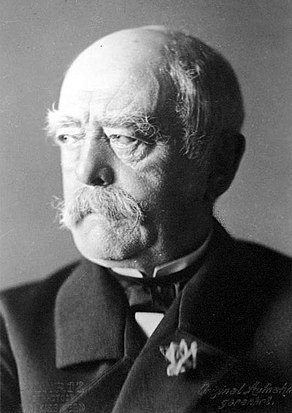

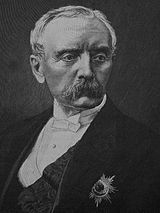
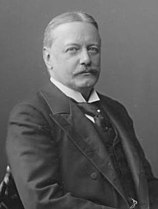
Otto von Bismarck (1871-1890)
The Iron Chancellor
With a man as talented and powerful as Otto von Bismarck, it is hard to know where to start when outlining his accomplishments. His rule over Prussia and later Germany totaled a combined thirty years, during which he upended the global order and reshaped the map of Europe as we know it today. His title of "The Iron Chancellor" originates from the iron grip he had over both German and international politics, as well as one of his most famous speeches.
Bismarck's greatest accomplishment was no doubt the unification of this great state of Germany, which he accomplished through both shrewd diplomacy and skillful warmaking. His wars against Denmark, Austria, and France propelled Prussia to new heights and allowed for the declaration of the German empire in 1871. As Bismarck had said 9 years prior to that exalted date, "the great questions of the day will not be decided by speeches or majority decisions, but by iron and blood"
Nations that claim power on the world stage by way of military might or economic excellence still kneel before Germany when it comes to care for their citizenry. Under Bismarck, Germany passed groundbreaking laws providing aid for injured or sick workers who could not earn a living for their families. Later, those benefits were expanded to aging or disabled citizens, creating the first social welfare program in Europe. It is my hope that countries with prospering upper classes may take a page from Germany's playbook and allow the government to care for those workers which have ensured its economic success. (Real subtle - T)
Leo von Caprivi (1890-1894)
A moment's pity for the poor man who must stand in the footholds of giants. How can one hope to compare to the eminence of Otto von Bismarck? Caprivi gave his answer by ripping to shreds one of Bismarck's foreign policy achievements, our former Reinsurance Treaty with Russia. This was a treaty that protected Germany from her greatest fear: a two (or three or perhaps even four!) front war, the Gallic rooster to our West and the Russian bear to our east. Why, then, would he not reinsure this treaty? Perhaps Russian reproachment with France was already a foregone conclusion; maybe he placed more value on Austria-Hungary and Italy than Russia; one scholar I've become familiar with has proposed that maybe his brain was "riddled with the worms of idiocy." The histrionics of the critics has never moved me. War will not come between Germany and Russia. A piece of paper changes nothing.
Caprivi realized that Germany would maintain her pre-eminence in Europe through either war or trade. For the first time, we chose industry. Commercial treaties were forged with an assortment of European nations including Austria-Hungary, Italy, Belgium, and Spain. He even ended a trade war with Russia, giving Germans access to cheaper Russian agriculture products. (What? Were the Merkel jokes too easy? -L)
Chlodwig zu Hohenlohe-Schillingsfürst (1894-1900)
Perhaps the greatest thing to say about Hohenlohe is that he was nobody's first pick for the job. Other names had been floated, but those picks proved too controversial. Hohenlohe, albeit aged, was a safe choice and caused the Kaiser no scandal. He served inconspicuously, which is to say without distinction. His cabinet was shuffled and reshuffled without his input and he found the winds of change blowing past him faster than he could react. A chancellor in name only, disempowered to enact any sorts of policies in the vein of predecessor. The most he achieved were reforms to the Prussian Military Law and the Law of Associations. In 1900, Hohenlohe took himself out of his misery and retired. Like his reactions to cooling relations with Russia and Britain, it came too little, too late. He died a year later.
Bernhard von Bülow (1900-1909)
The position of the Chancellor in the early 20th century increasingly seems like an ornate title for the caregiver of the Kaiser. After Wilhelm II inflamed tensions between Germany and France during the Morocco Crisis, it fell upon von Bülow to clean up the debacle. He represented the Kaiser at the Algeciras Conference, a meeting meant to defuse the tensions of the aforementioned crisis. Germany was humiliated, her terms discarded and the alliance between Britian and France was strengthened. When von Bülow defended his work at the conference, he became so overwhelmed that he collapsed.
Much like the first of his office, von Bülow's career came to an end in a conflict with Kaiser Wilhelm II. In a conversation published by the Daily Telegraph, the Kaiser attempted to court the affection of Britain and her king. Perhaps Herr Freud could say something in regards to His Majesty's love for his mother's country. (Note: Please never imply something like this ever again - T). Unfortunately, it had the opposite effect. The British public was appalled at the Kaiser's words, which read more as the ramblings of a madman than as the diplomatic forays of an emperor. Perhaps the outcry could have been prevented had von Bülow properly reviewed the text before it was published, however, he did not. The Kaiser viewed this as a betrayal and forced him to resign.
#otto von bismarck#leo von caprivi#chlodwig zu hohenlohe-schillingsfuerst#bernhard von bülow#staffer leopold#staffer theodor#bonus bracket
7 notes
·
View notes
Text
Bernhard Roetzel
Le luxe s'achète, le goût s'acquiert, l'élégance est innée. Bernhard Roetzel est l'auteur de manuels d'éducation du goût portant sur les détails de la culture occidentale. Ses livres illustrés Der Gentleman (1999) et Traditional Style (2000) sont des reportages photographiques de chaque aspect concret de la Culture européenne: le vêtement, l'ameublement, les arts de la table, l'éducation des enfants, l'ordonnancement urbain, la classification des loisirs, jusqu'à l’entretien d’une pelouse, au cirage des chaussures ou à la préparation du pique-nique champêtre. Ce sont là des choses connues? Pourtant nous redécouvrons à neuf chacune d'entre elles, ressuscitées, à la lumière de photos et de commentaires dont l'efficacité sont sans concurrence dans ce domaine. M. Roetzel est un réenchanteur de tout ce que nous aimons dans le monde.


Il y avait davantage de sagesse dans le concret des gestes quotidiens de nos grands-parents que dans la pseudo-philosophie du 20ème siècle. Vivre ainsi aujourd'hui, en Français traditionnel, est une voie ouverte à qui veut la prendre: la Culture Européenne détaillée par Roetzel est intemporelle ; la forme de cette Culture touche à une perfection qui ne souffre ni ajout ni retranchement.

Nous vivons au milieu des pièces d'un fabuleux héritage et y sommes accoutumés au point de ne plus même le voir. Ce faisant nous perdons l'usage de ce legs, oublions d'où nous venons, qui nous sommes et ce que nous faisons.
Un homme annonce-t-il vouloir diriger une ferme, un village, une ville ou une région? Pour évaluer la confiance à lui accorder vous étiez jusqu'ici habitués à écouter ses discours. Vous examinerez désormais la manière dont cet homme a dirigé son propre domaine: son jardin, sa maison, son studio de 20 mètres carrés, sa toilette du jour. L'homme fidèle en peu de choses est capable de grandes choses dit l’Evangile.

Notre monde du tertiaire, du débat, de l'abstrait, est rempli de directeurs de cabinet mais vide de chef de protocole. Aux "valeurs" il est bon de joindre les actes. C'est la stature, l'incarnation, l'exemple vivant qui nous donnera sans recours aux mots les clés de la vraie Culture. "Je n'ai point besoin de sermon mais de délivrance légère" disait Céline.
Der Gentleman est à la fois une encyclopédie du vêtement masculin, jalonnée d'encadrés, de bonnes astuces, et une notice d'utilisation, un vrai mode d'emploi de la vie pratique. Si Der Gentleman constitue le catalogue de l'Européen habillé, Traditional Style explore le cadre de vie de ce même homme. Ces deux titres complémentaires ont pour objet ce que les peuples occidentaux ont produit de plus beau, de plus intelligent, de plus pratique, bref d'objectif, au point d'y convertir le monde entier: porter un pantalon, manger avec des couverts dans une assiette, s'asseoir sur une chaise, dormir dans un lit. La fenêtre, le savon, la salle de bains et mille autres objets spécifiquement occidentaux sont eux aussi devenus objets universels. Roetzel a expliqué, illustré chacun de ces éléments considérés dans leur finition la mieux aboutie.

Est-ce en raison du fameux "esprit de système" germanique qu'il fallait que Bernhard Roetzel, allemand, fût le pédagogue le plus complet sur la culture anglaise, par exemple? L'Angleterre, l'Italie et la France sont des revendicateurs bruyants d'un certain art de vivre. Il existe en Allemagne une classe d'esthètes ignorée du reste du monde et peu soucieuse de s'en faire connaître. La bourgeoisie patrimoniale et industrieuse de Cologne, Munich, Hanovre, Brême, Hambourg, aux bourgeoisies très Heimat, connaît bien ses codes culturels : habitat, vêtement, sport, éducation, voiture, art et artisanat. Une bourgeoisie probablement plus raffinée, plus enracinée que la parisienne, que la londonienne, plus sérieuse, plus discrète.
M. Roetzel est un sujet qui s'efface pour ne montrer que l'objet, la chose en soi. En cela il rend davantage service à la cause qu'il sert que les "sartorialistes" montreurs de costume issus du youtubage. Seule doit demeurer la Culture, dont le vêtement et l'ameublement sont des catégories "superficielles par profondeur", parmi d'autres.
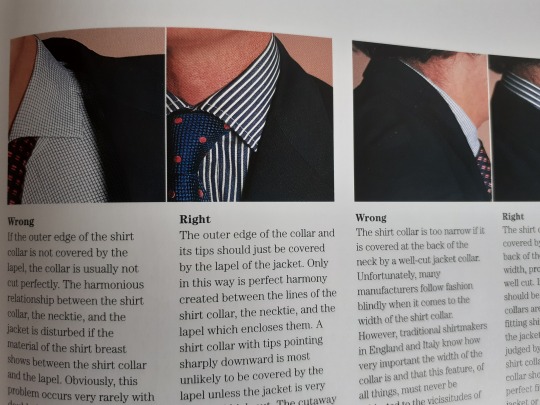
La production d’une Culture est la preuve de la Conscience de Soi d’un peuple. Les primitifs ne produisent pas de culture. Plus un peuple a de Conscience de Soi et plus la Culture qu’il produit est codifiée. L'exaltation de l'intelligence individuelle est une marque de basse époque, source de divisions hélas durables. La Culture, elle, est une intelligence collective, un pacifique ensemble d'habitudes forgées par l'expérience concrète de la vie, un tissu de réticences du Je en faveur du Nous, une science de la sous-expression (understatement), un code de reconnaissance communautaire à usage interne pour l'exercice du Bien Commun. La Culture était très understatement jusqu'à la fin des années 1990, avant les années Eden Park, avant la vague tapageuse du faux preppy, du genre gala d'école de commerce, lorsque l'argent était encore une chose un peu honteuse et que les classes sociales d'avant internet vivaient dans un relatif cloisonnement. Charme discret de la petite bourgeoisie locale, où êtes-vous ?
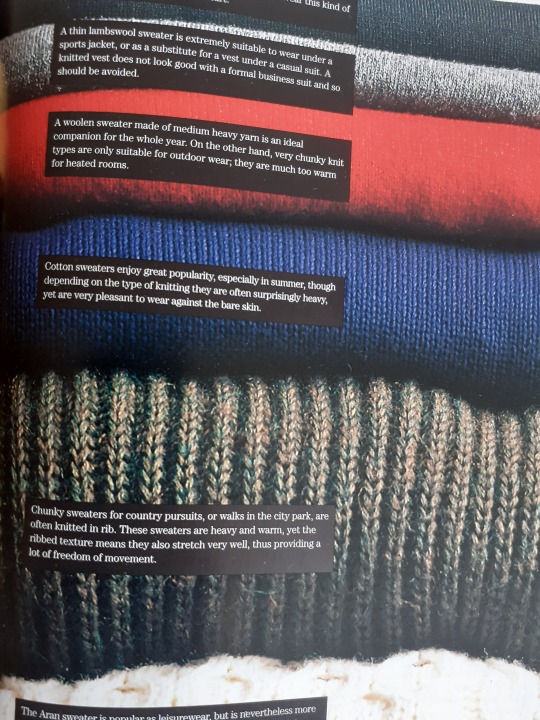
M. Roetzel écrit non en conseiller en mode mais en technicien de la culture attentif aux faits, aux actes et aux objets qui équipent celle-ci, il rédige un rapport d'enquête renseigné, neutre, qui démontre chaque argument par la photographie appropriée.
Le vrai style ne peut être sujet qu'à un ou deux changements mineurs par génération. Contrairement à la mode le style est stable, sa supériorité n'est pas dans le renouvellement cyclique de nouveautés mais dans le perfectionnement d'une Forme qui vise la plus pure exactitude fonctionnelle. L'ergonomie du vêtement bien pensé, l'importance de connaissances en anatomie pour former de bons modélistes, vastes sujets qui sont la voie royale du bel habillement.
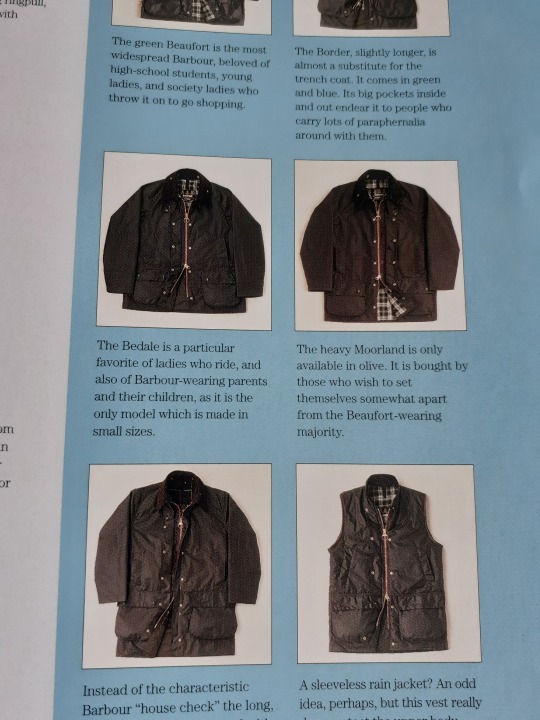
Deux principales tendances accaparent les hommes: ils sont plutôt exhibitionnistes ou bien plutôt voyeurs c'est ainsi. Les exhibitionnistes sont la majorité de ce monde qui gît au pouvoir du mauvais goût, individus à haute estime de soi et basse conscience de soi. Monsieur Roetzel appartient au tempérament exactement opposé, celui du voyeur, celui des hommes en retrait qui aiment voir et n'être pas vus, qui ont tout compris et que personne n'écoute, c'est pourquoi ils écrivent.
#Bernhard Roetzel#Der Gentleman#Traditional Style#L'éternel masculin#Sartorial#mens style#Class#Classicisme#Tradition#Vêtement#Habitat#Ameublement#Décoration#Rug
21 notes
·
View notes
Text
youtube
ALBUM: Stormy Weather ..... LABEL: AT&T Presents ..... Year: 1998 From the AT&T special release CD (and one of the best things I ever got in the mail!). This concert, April 16, 1998, was held for the benefit of the Walden Woods Project and the Thoreau Institute. It was produced by Don Henley and recorded live at the Wiltern Theater in Los Angeles. It featured a dazzling array of top contemporary female vocalists singing pop & jazz standards from the 30's - 50's and is some of the best music you will experience. The Fabulous Ladies: Joni Mitchell, Sheryl Crow, Trisha Yearwood, Paula Cole, Sandra Bernhard, Natalie Cole, Shawn Colvin, Bjork, Stevie Nicks and Gwen Stefani. Musical Director: Larry Klein Arranger/Conductor: Vince Mendoza Featured Musicians: Chuck Berghofer - Bass, Jim Cox - Piano, Peter Erskine - Drums, Gary Foster - Alto Sax, Mark Isham - Trumpet, Plas Johnson - Tenor Sax and the rest of the 66 piece El Nino Orchestra. NO COPYRIGHT INFRINGEMENT INTENDED, NOT FOR PROFIT. Links: http://www.mtv.com/news/articles/1515... www.walden.org/About_Us/Biographies/Don_Henley
Got the link from the GS Discord server.
If someone says Gwen can't sing, you can prove them wrong with this.
7 notes
·
View notes
Text

La prima volgarità non passa dalle parole bensì dallo spirito. Un cuore volgare desidera cosa volgari, piccoli desideri meschini di una mediocrità permanente.Gente che ride fiera della propria ignoranza, esseri che non possono darti nulla se non la loro inerzia di massa.
-T. Bernhard
6 notes
·
View notes
Text
Random Info On Berine
- Her MBTI is ISFJ-T
- She's right-handed
- She sleeps for a maximum of two hours as she's far too busy as an archivist to even sleep. Martin and Ríonach worry about her a lot as a result
- She rarely gets angry, and when she does, expect corpses ranging in the thousands
- Her favourite season is winter
- Her parents died during the Lichteran
- Her current first name is because @inquisitive-mess once misspelt Bernhard's nickname (Bernie) as Berine and I liked the name so much that I made it her name. Her current surname means 'night doubt' in German
Her birth first name is taken from a list of German female names starting with B. Her birth surname means 'lunar/moon grace' in German
- Her signature song is Bird With A Broken Wing by Owl City
- She used to be 15 minutes early, however ever since she became an archivist, she tends to run 25-30 minutes late as she usually has to deal with last minute issues
- Beings assume that she takes leave during the Ratein Combat Championship as the mere mention of fighting brings back war memories. This is actually false as she's secretly participating in said championship as Wahnsinn in order to earn sufficient money to secretly give all her employees a winter bonus. In fact, she has secretly taken an 80 percent pay cut in order to increase her employees' pay, but the amount isn't noticeable due to the archivist's low pay
- She loves wearing the Blaurose Gloves that she received from Charles, but misses wearing the Mondgnades' Edelmond Gauntlets
- She's able to see and hear the souls who are visiting from Mirotein clearly, and often forgets that majority of Ratein doesn't have this ability
- In a Real World AU, she's from Germany
- In a Real World AU, she's 51 and works as a librarian full-time
4 notes
·
View notes
Text
ROUND 1 POLL 44 SIDE A

About the NPCs (may contain spoilers -- proceed with caution!):
Phineas Barnone is one of the Seven Dragons. He owns the Saveloy theater.
Otherwise known as: クラーク・ゴスペック (Japanese); Bernhard P. Heller (German); Leonard Goldman (Spanish); Hugues O. Perette (French); Philippe T. Mustach (Italian); Ton Aylemeester (Dutch)
Splinters is a member of the Family.
Otherwise known as: ピランチ (Japanese); Frankston (German); Peppino (Spanish)
#professor layton#pl#phineas barnone#splinters pl#layton's mystery journey#professor layton and the unwound future#round 1#side a
3 notes
·
View notes
Text
Film Noir double bill
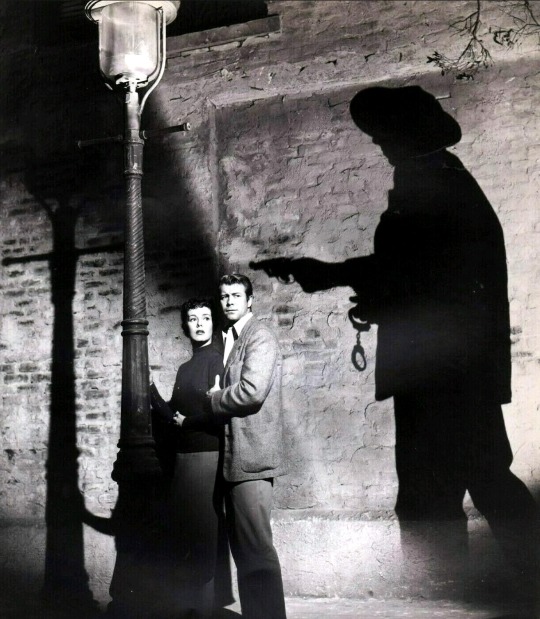
Crime Wave (1952 by André de Toth) Meine Wertung: 9/10 (IMDb: 7,3/10) D. T.: Von der Polizei gehetzt.
Decoy (1946 by Jack Bernhard) Meine Wertung: 6/10 (IMDb: 6,8/10) D. T.: Blonder Lockvogel
English version below
Zwei Noir wie sie unterschiedlicher nicht sein könnten.
Crime Wave von André de Toth pflegt den dokumentarischen Stil, den man auch aus Naked City oder He walked by night kennt, aber ohne die nervigen Off-Kommentare. De Toth dreht on location, selbst in LA City Hall, dem LAPD Hauptquartier, mit Handkamera vom Rücksitz eines Wagens, Nachts in Burbank, Chinatown und Hollywood.
Die Geschichte allerdings ist 08/15. Ein geleuteter Ex-Knacki, wird von drei Ausbrechern besucht, die auf ihrer Flucht einen Polizisten getötet haben. Sie zwingen ihn, bei einem Raubzug mitzumachen. Sterling Hayden gibt den bärbeißerischen Cop, der zum Schluß Herz zeigt.
Decoy dagegen ist eine billige Studioproduktion mit schäbigen Kulissen, 4x die gleiche Fahrt auf einer Landstraße und von seiner ganzen Machart ein B-Movie. Aber die Geschichte ist origineller als bei Crime Wave und Jean Gillie gibt in ihrer ersten Rolle bereits brillant die femme fatale.
Margot Shelby (Gillie) will ihren Mann vor der Gaskammer retten, da nur er das Versteck der Beute weiß. Dazu raubt sie die Leiche nach der Hinrichtung und lässt sie, Frankensteinesque, mit einem Gegengift wiederbeleben. Etwas konstruiert und am Ende geht es für keinen gut aus.
Für mich entscheidet letztendlich die handwerkliche Leistung des Regisseurs und da liegt De Toth klar vor Jack Bernhard. Decoy war der erste (und beste) von 13 B-Filmchen Bernhards und ein Vehikel um seine Gattin Jean Gillie in Szene zu setzen.
Andre DeToth' Film gilt als wiederentdeckter Klassiker des Film Noir, handwerklich perfekt, visuell beeindruckend und spannend.
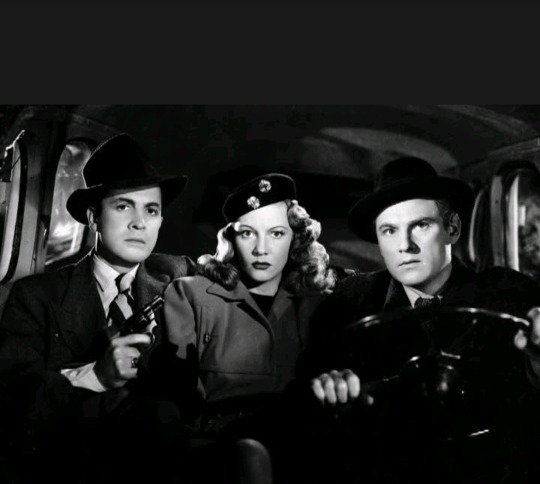
English version:
Two noirs that could not be more different.
Crime Wave by André de Toth maintains the documentary style familiar from Naked City or He Walked by Night, but without the annoying off-camera commentary. De Toth shoots on location, even in LA City Hall, the LAPD headquarters, with handheld camera from the back of a car, at night in Burbank, Chinatown and Hollywood.
The story, however, is a run-of-the-mill one, in which a convicted ex-con is visited by three escapees who killed a cop on the run. They force him to join them on a heist. Sterling Hayden plays the hard boiled cop who shows heart at the end.
Decoy, on the other hand, is a cheap studio production with shabby sets, 4x the same drive on a country road and by its whole make a B-movie. But the story is more original than in Crime Wave and Jean Gillie in her first role already brilliantly plays the femme fatale.
Margot Shelby (Gillie) wants to save her husband from the gas chamber, since only he knows the hiding place of the loot. To do this, she steals the corpse after the execution and, Frankensteinesque, has it reanimated with an antidote. A bit contrived and finaly it doesn't end well for anyone.
For me, it's the director's craftsmanship that ultimately decides and there De Toth is clearly ahead of Jack Bernhard. Decoy was the first (and best) of Bernhard's 13 B-movies and a vehicle to showcase his wife Jean Gillie.
Andre DeToth's film is considered a rediscovered classic of film noir, perfectly crafted, visually impressive and exciting.
3 notes
·
View notes
Text
How to Draw a Skeleton Step by Step
BIBLIOGRAFIA
Constructive Anatomy George B. Bridgman
Struttura Uomo.Manuale Di Anatomia Artistica Vol1
Fundamentals of Drawing. Russian Academy of Arts. Written by the head of the Drawing Department, professor Vladimir Mogilevtsev
LAURICELLA, Michel Col·lecció sobre Anatomia Artística. 9 volums Editorial Gustavo Gili, S.L.; N.º 1 edición (9 abril 2018) ISBN-13 : 978-8425231179
Anatomía artística, de Michel Lauricella PDF - Editorial GG
Anatomía artística, de Michel Lauricella 3 El esqueleto
Anatomía artística, de Michel Lauricella 5 Articulaciones y funciones musculares
Anatomía artística, de Michel Lauricella 2 Cómo dibujar el cuerpo humano de forma esquemática

How to Draw a Skull in Profile, Step by Step
dd
dd
dd
dd
instagram
🌴 Art Basel Miami Beach 🗓️ Dec 6–8, 2024 📍Miami Beach Convention
Exhibitions
Bibliografia
LAURICELLA, Michel Col·lecció sobre Anatomia Artística. 9 volums Editorial Gustavo Gili, S.L.; N.º 1 edición (9 abril 2018) ISBN-13 : 978-8425231179
Anatomía artística, de Michel Lauricella PDF - Editorial GG
“Dibujar es equivalente a pensar. Algunos dibujos se hacen con la misma intención que se escribe: son notas que se toman. Otros intentan resolver la ejecución de una escultura en particular, o imaginar cómo funcionaría. Existe un tercer tipo, dibujos representacionales de obras que se realizan después de las mismas. Dándoles un nuevo enfoque. Todos ellos posibilitan una aproximación sistemática en el trabajo, incluso si a menudo fuerzan su lógica interna hasta el absurdo.”(Bruce Nauman, citado en Las lecciones del dibujo: Gómez Molina: 33)
GÓMEZ MOLINA, Juan José(Coord.) Las lecciones del dibujo Ediciones Cátedra. Madrid,1995. ISBN-13: 978-84-16372-49-2
Índex:
Capítulo I. El concepto de dibujo; Capítulo II. Los dibujos del dibujo; Capítulo III. El andamiaje de la representación; Capítulo IV. La modelo y los modelos del dibujo; Capítulo V. Razonando la corpulencia: el dibujo de las modelos; Capítulo VI. El libro, profesor de dibujo; Capítulo VII. Conocimiento como naturaleza muerta; Capítulo VIII. Modelos de libertad; Capítulo IX. Educación sentimental; Capítulo X. Descripción y construcción del universo; Capítulo XI. De lo imaginario representado; Capítulo XII. Caligramas; Capítulo XIII. El dibujo como escritura del material; Apéndice. Textos sobre el dibujo.
BIBLIOGRAFIA específica
BOERBOOM Peter i PROETEL Tim
Dibujar la luz
Editorial Gustavo Gili. Barcelona, 2017. ISBN/EAN: 9788425230523
BARCSAY, Jenö
Anatomía artística del cuerpo humano
Ediciones Daimon. Barcelona, 1984
DAUCHER, Hans
Modos de dibujar; la figura
Editorial Gustavo Gili. Barcelona, 1987
GÓMEZ MOLINA, Juan José(Coord.)
Las lecciones del dibujo
Ediciones Cátedra. Madrid,1995. ISBN-13: 978-84-16372-49-2
LAURICELLA, Michel
Col·lecció sobre Anatomia Artística. 10 volums
Editorial Gustavo Gili, S.L.; N.º 1 edición (9 abril 2018) ISBN-13 : 978-8425231179
0 notes